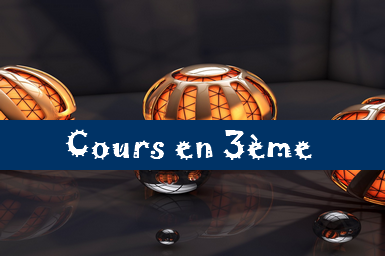Un document qui reprend sous forme de synthèse, tous les cours de mathématiques en classe de troisième afin de préparer le brevet de mats au collège.
Vous retrouverez dans ce document à télécharger gratuitement au format pdf les cours suivants :
- Arithmétique
- Calcul numérique et fractions
- Puissances et écriture scientifique
- Les racines carrées
- Développement et factorisation
- Equations et inéquations
- Notion de fonctions
- Fonctions linéaires
- Fonctions affines
- Grandeurs composées et unités
- Géométrie dans le plan
- Les angles
- Triangles, quadrilatères et polygones
- Droites remarquables et triangles
- Théorème de Pythagore et de Thalès
- Trigonométrie
- Périmètres et aires
- Volumes et aires latérales
- Pourcentages
- Probabilités
- Statistiques
- Les quartiles
- Les différentes représentations graphiques.
Ce document qui fait la synthèse de tous les cours de mathématiques en troisième est à télécharger au format PDF.
Cours de maths en troisième 3ème
D'autres cours et exercices à consulter
- Brevet de maths 2023 : sujet blanc pour réviser le brevet du collège.
- Annales du brevet de maths 2024 : réviser le DNB de maths.


